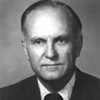Unemployment
Unemployment is one of the most senseless and unnatural phenomena ever to descend on man. Any improvement in the arrangement and use of resources in the world depends on human labor. Man must sustain his life through labor. That is as certain as day and night. And yet millions of people are unemployed. The news media announce it, the educators lament it, politicians condemn it, and governments allocate public funds to eradicate it. No other economic phenomenon receives as much public attention as unemployment. Despite such popular condemnation, unemployment persists, holding millions of Americans in its deadly grip. Unemployment is a political disease which springs from the primitive but popular notion that government can improve everyone’s income and working conditions by legislation and regulation, and that labor combinations can exact higher incomes and better conditions through collective bargaining. It is an affliction that stems from misinterpretation and misinformation about work and income and from an undaunted faith in collective force and coercion. As such, it clearly reflects the spirit and mentality of our age. The rate of unemployment is directly proportional to the force applied to raise the cost of labor. Force may be applied by the victims themselves acting collectively through properly certified labor unions, or by governments enacting laws and imposing regulations that raise labor costs. But in final analysis, unemployment descends from the vague supposition that collective force is capable of improving the economic conditions of working people. There are no “instant” solutions to the phenomenon of unemployment, no painless recipes or political prescriptions. There are no coercive cures or remedies that create jobs for the jobless. Labor will be fully employed when its application is profitable and adds value to production. The way to alleviate unemployment is to reduce the coercion of minimum wage legislation, fringe benefit mandates, and union rates and rules. It is to restore freedom in the labor market, which permits the cost of labor to readjust to the true level of productivity. []
—Hans F. Sennholz
THE FOUNDATION FOR ECONOMIC EDUCATION, INC.
IRVINGTON-ON-HUDSON, NEW YORK 10533

